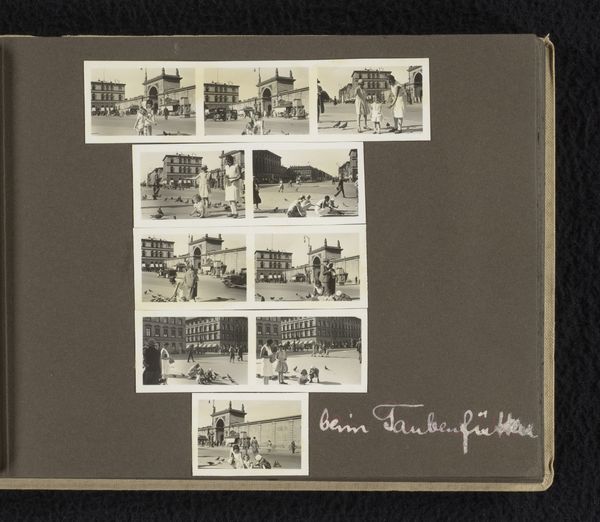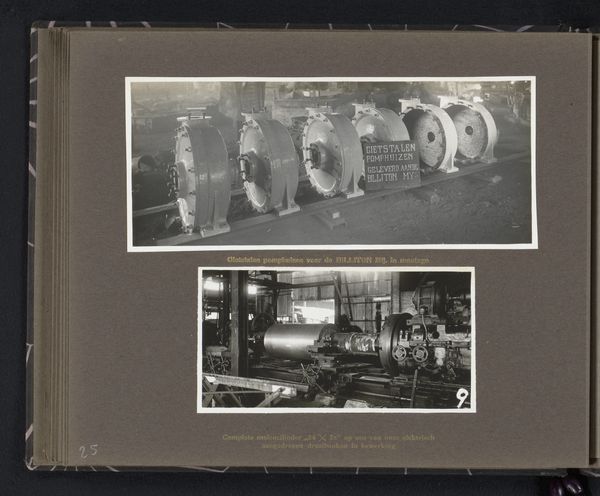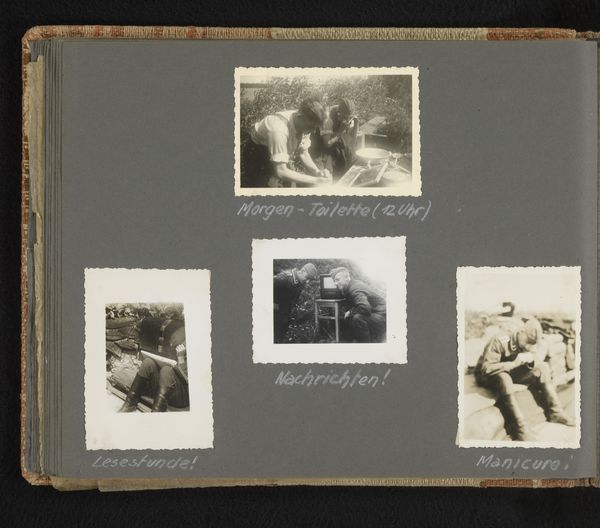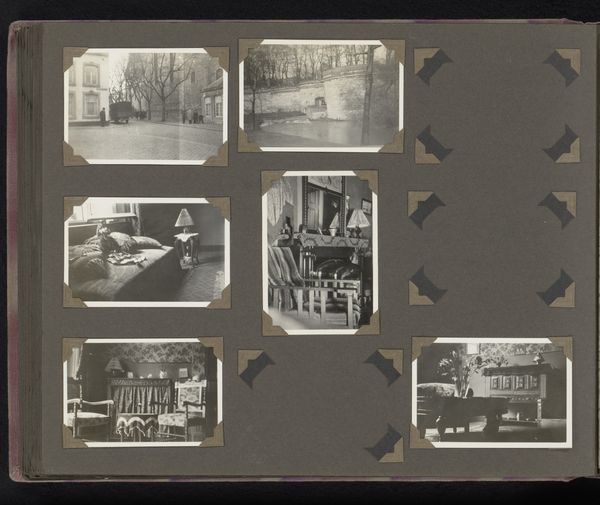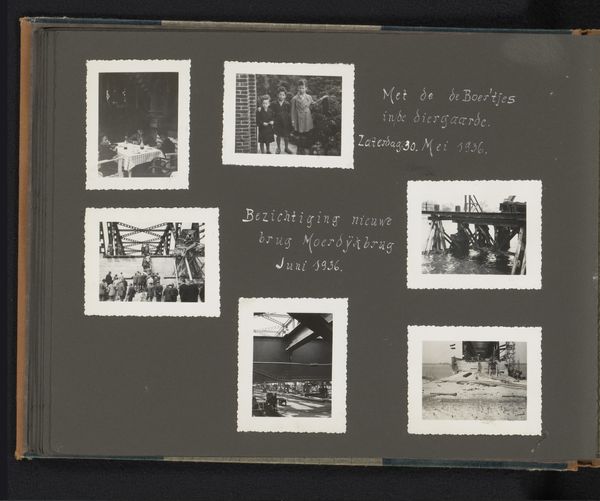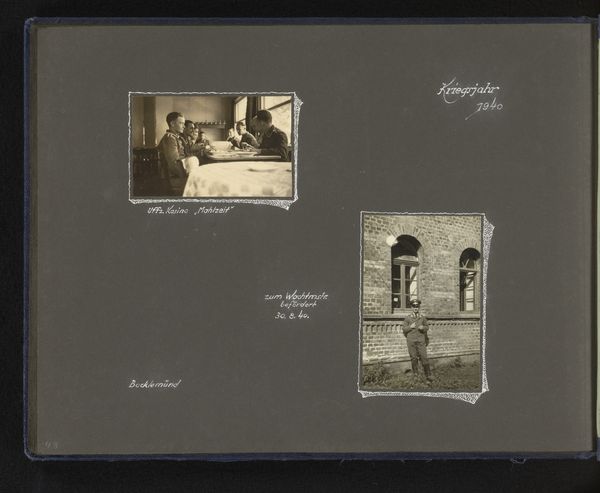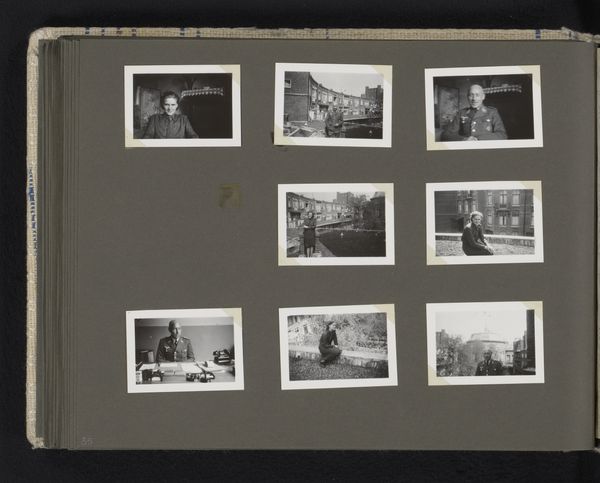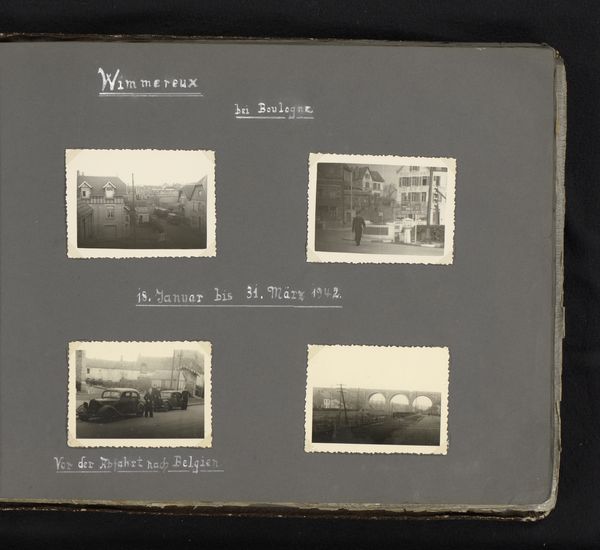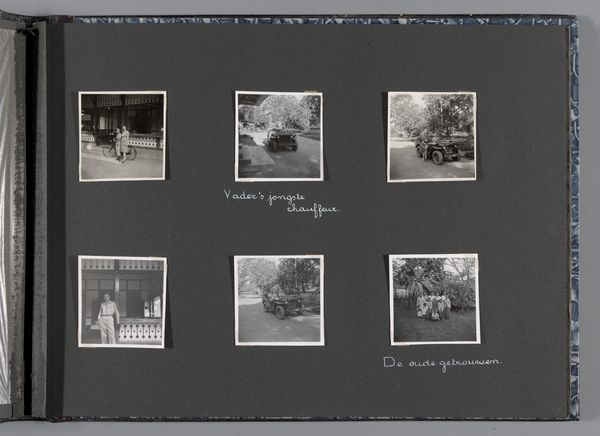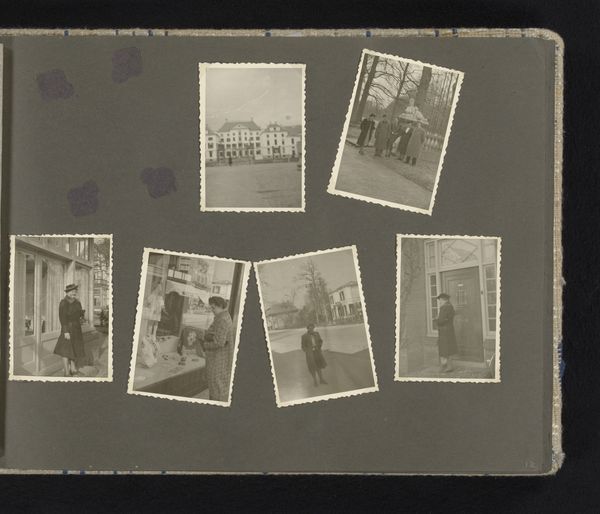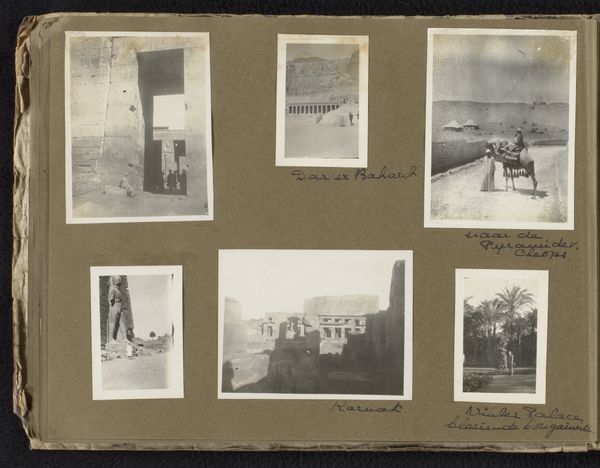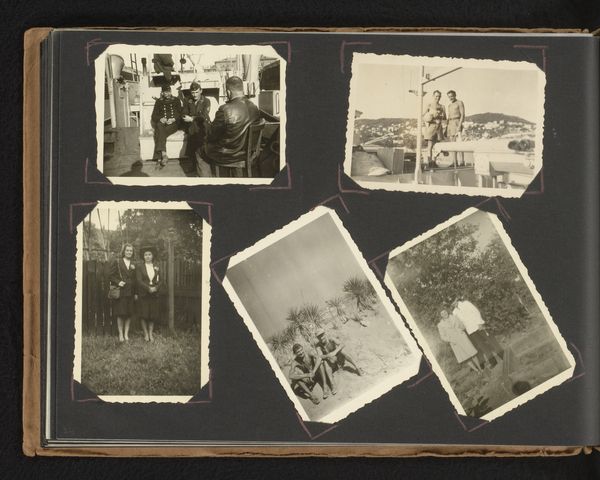
Dimensions: height 60 mm, width 90 mm, height 210 mm, width 260 mm
Copyright: Rijks Museum: Open Domain
Editor: This photomontage, titled "Rotterdam!", dates from 1940 to 1946. It uses albumen prints and other paper-based photography techniques. It's…bleak. The ruined cityscape evokes feelings of profound loss. What historical narratives are embedded within this image for you? Curator: For me, this image screams about the violence enacted upon Rotterdam. We’re not just seeing damaged buildings; we’re seeing the obliteration of a community, a direct assault on civilian life during wartime. It forces us to confront the brutal realities often sanitized in heroic war narratives. Editor: So, beyond the aesthetic depiction of destruction, you see it as a challenge to dominant war narratives? Curator: Precisely. Consider the use of photomontage itself. The artist is actively constructing a narrative, piecing together fragments of reality to highlight the fragmentation of society caused by war. It’s a postmodern statement about the impossibility of objective representation, especially in times of conflict. What do you make of the inscription of "Die ‘Staatendam’"? Editor: I didn’t initially connect it, but it mentions a wrecked ship, contrasting industrial power with destruction. A poignant juxtaposition, enhancing the message of devastation. It amplifies the feeling of humanity’s folly. Curator: Exactly. It underlines the inherent tension between progress and destruction, a theme that resonates throughout the 20th century. It’s a stark reminder of the human cost of conflict, moving beyond mere historical record into the realm of social commentary. Editor: This reframing truly unlocks new meanings for me. It goes beyond the surface to comment on war, collective memory, and the trauma inflicted upon Rotterdam. Curator: Yes, it calls for acknowledging uncomfortable truths that demands a critical reassessment of historical events and their lingering impact.
Comments
No comments
Be the first to comment and join the conversation on the ultimate creative platform.
